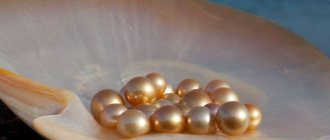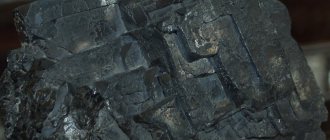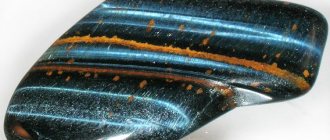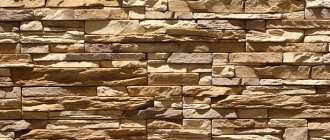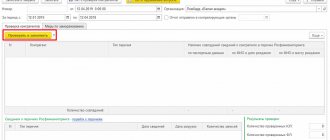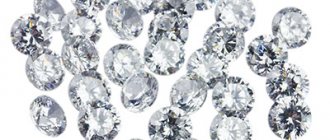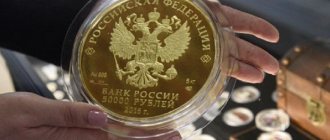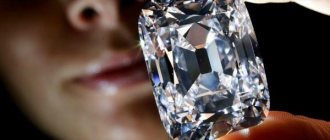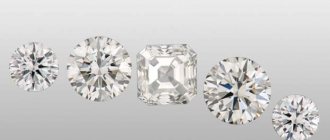The Rapaport Diamond Report Weekly Price List is the oldest and most popular diamond price indicator. The first issue was published in 1978 by Martin Rapaport, and although this price list has many weaknesses, it is the basis for most transactions involving polished and rough diamonds. The Rapaport Diamond Report is published in two price editions: for round diamonds and for pear-cut diamonds (and other fancy cuts).
The Rapaport Diamond Report Weekly Price List is the oldest and most popular diamond price indicator. The first issue was published in 1978 by Martin Rapaport, and although this price list has many weaknesses, it is the basis for most transactions involving polished and rough diamonds. The Rapaport Diamond Report is published in two price editions: for round diamonds and for pear-cut diamonds (and other fancy cuts). The figures indicated in the price list are based on the maximum prices that major diamond dealers are willing to offer to wholesale buyers. Please note that the Rapaport price list provides prices for diamonds ranging from 0.01 carats to 10.99 carats, with a cut quality of at least Very Good and characteristics defined in the GIA . Diamonds with an ideal cut (Ideal Cut) and Excellent cut can be 10-20% more expensive than the items indicated in the price list. Prices are in hundreds of US dollars per carat (for diamonds of any size).
The price list contains 18 tables (for fancy-shaped diamonds - 8 tables), the data is grouped by traditional weight ranges (0.9-0.99, 1.00-1.49, etc.), transitions between weight categories on average increase the cost of a diamond from 20 to 40%. For example, if a 1 carat G\VS1 diamond costs $8,200 per carat, then a 1.5 carat diamond costs $11,100 (total cost - $16,650). The bonus for moving from one weight category to another is 35%.
It is quite easy to notice that the diameter of a round diamond weighing 0.99 carats is indistinguishable to the eye from the diameter of a carat stone. But the price is more than distinguishable. It seemed that in order to save money it was enough to buy stones close in weight to the boundaries of the weight categories (0.99, 1.49, 1.99 carats). But everything is not so simple: firstly, there are not many similar sizes on the market (only the most meticulous cutter will not “pull out” a round diamond before moving to a new weight category: the minus in the cut will be covered by a premium for weight). Secondly, the market provides the term “oversize” - diamonds falling into weight categories: 0.6-0.69, 0.8-0.89, 0.95-0.99, 1.25-1.49, 1.70-1.99, 2.50-2.99, 3.50-3.99, 4.50 + carats are sold with a premium of at least 5% -10%. There are no strict cutting rules for fancy diamonds, so there are negligibly few oversized diamonds, especially up to 1.99 carats (for example, 1.25-1.49, etc.), on the market.
The Rapaport Diamond Report for fancy shapes is based on the teardrop (pear) cut. The remaining fancy shapes are either equal in price to pear-shaped diamonds or are sold at a slight discount. For example, the princess cut is several percent cheaper than a teardrop-shaped diamond, and the emerald cut is sold at the largest discount.
In Russia, prices for loose certified diamonds (in Russian laboratories) are on average 1.5-2 times higher than prices for similar items in the Rapaport Diamond Report price list. In Western Europe and America, the price rarely exceeds Rapaport's estimate, either for exceptionally rare and high-quality specimens, or when targeting an amateur or a tourist. For example, recently traders in the UAE have been particularly inventive, selling fancy cut diamonds at list prices for round diamonds. If we consider that the certificate accompanying the diamond is usually not one of the reputable ones, then even fabulous discounts of 40-50% from the Rapaport price list in reality can turn into a 10-20 percent markup.
Examples of price lists for diamonds:
Rapaport Diamond Report - wholesale prices for round diamonds
IDEX, DRB - retail prices for round diamonds
IDEX, DRB - retail prices for fancy diamonds
Ben Yona wholesale price for yellow diamonds
Why was the report needed and how was it compiled?
The Rap Report is a weekly diamond price list used by professionals.
Martin Rapaport was born and raised in an intelligent family. He began his career as an apprentice diamond cutter and worked his way up the ranks in the industry. His career changed after he created RapNet - the Rapaport network.
But what led to the widespread acceptance of the Rap report over any other diamond price lists created by other organizations? Well, there is a rather interesting story that I would like to briefly tell you about.
Diamonds have now become quite common and they have become equal members of our globalized democracy. Today, diamonds are available to everyone who can afford them.
However, this was not always the case in the past. Back then, your access to certain goods was strongly tied to your social status. Even if you have money, you won't be able to buy diamonds unless you belong to a higher "social class" or have certain privileges.
As the global market began to democratize, pricing strategies that were initially only relevant to insiders soon fell out of favor and the market became chaotic. During the 1970s, price manipulation and market speculation were common.
Diamond prices fluctuated widely, and standard industry benchmarks were urgently needed to stabilize the market. By funding the Rapaport Group in 1976 and creating the world's first electronic diamond trading network, Martin Rapaport was able to standardize diamond pricing schemes through the publication of the Rapaport Diamond Report.
Since then, Rapaport Group has become the most trusted source for diamond price lists and has even grown into one of the largest retail chains.
How prices for diamonds are calculated in Russia
As in many other areas, Russia is following its own special path in the diamond trade. In our country, prices for polished diamonds, as well as for rough diamonds, are set by the Ministry of Finance. Moreover, the price list of the Ministry of Finance is updated quite rarely; for example, in 2010, the industry was working according to the price list for diamonds from 2006. It is interesting that it is impossible to find the price list itself, for example, in the legal framework (GARANT, Consultant+). This document is practically secret.
If we compare “Estimated prices for diamonds” edited by A.L. Kudrina and the weekly price list Rapaport Diamond Report from Martin Rapaport, what they have in common is, perhaps, only the currency of calculation. The difference in prices reaches almost 80%. Naturally, no one sells diamonds at these prices. And unlike international trade, where it is very important what discount the seller is willing to provide from the Rapaport price list, in Russia the bargaining is based on markup percentages to the Ministry of Finance price list. In 2010, Alrosa entered into long-term contracts with several large international companies for the supply of rough diamonds at the Ministry of Finance price list + 17%. Inside Russia, wholesale buyers of diamonds expect a markup that equalizes prices with the Rapaport sheet (for example, wholesale price lists of OJSC PO Kristall). And retail buyers are doomed to a 200-300% markup on the Ministry of Finance price list. For example, the cost of a 1-carat 6\7 diamond in the Russian price list for diamonds is $3,000, in the online store of OJSC PO Kristall — $10,750 (rate 1:30, 03/10/2010). Of course, this difference does not indicate the predatory aspirations of domestic diamond producers and sellers, but the extreme distance from the real market prices in the Ministry of Finance price list. In addition, the final prices of Russian diamonds are affected by a colossal corruption and administrative burden.
Today, professional market participants can only dream of free circulation of precious stones in Russia. The solution to the problems of the diamond industry, at the same time, lies in customs and tax legislation, as well as in the bureaucratic system of issuing permits, quotas, etc. All this has practically stopped our movement towards a civilized diamond market.
The importance of Martin Rapaport in the diamond market
The Rapaport report suggests specific target prices for diamonds of different sizes, qualities and shapes. Thus, it combines the core characteristics of the “four Cs” with an additional “fifth C,” which is cost.
Like any other resource, prices for diamonds on the world market may fluctuate from time to time. By providing weekly reports on changes in market movements, the business community can stay connected and instantly know the latest prices.
Today Martin is considered one of the most respected people in the diamond industry. It influences the global market and is the reason why diamonds with the same attributes are priced the same in, say, Korea and the US.
Access to the price list is provided only by paid subscription. At the time of this writing, the monthly report subscription fee is $180 per year, and the weekly email report costs $250 per year.
So that's the brief background to the Rapaport report. Now that we've discussed the origins of the price list, I'm sure the next question on your mind is, "How good is it for me?" As a consumer, how can you use the Rapaport report?
Will the Rapaport report be relevant to you?
Let me guess. The reason you are reading this article is because you heard a jewelry salesman quote the Rapaport report in a sales pitch. You're probably looking into the usefulness of the Rap report and don't want to overpay for diamond purchases.
Before we dive in, you need to know two things...
First of all, the Rapaport report or RAP sheet is a theoretical system for assessing the prices of diamonds in business transactions. The prices shown on the RAP sheet are intended to be used as a guide only.
Even Rapaport's table in the footer of the price list has a prominent disclaimer, and I quote: “The prices in this report reflect our opinion of HIGH CASH NEW YORK REQUEST PRICES . These prices may be significantly higher than actual transaction prices. No warranty or commitment is made as to the accuracy of the information in this report.”
Price per carat for round cut VS1 clarity 0.60 carat.
Secondly, the Rapaport report is mainly used by jewelers and professionals to evaluate and value their inventories. In retail trade, it is not customary to show the Rap List to the consumer.
But when a seller uses it for marketing purposes, you can be almost sure that they are trying to inflate the price using the Rap report as justification for the asking prices.
When it comes to competitive prices and risk-free shopping, Jame Allen and White Flash are the best places to buy your engagement ring. Not only will you receive a superb selection of GIA/AGS graded diamonds, but you will also have hundreds of stunning setting designs to choose from.
Main foreign certificates and their impact on the cost of diamonds
This section will discuss the rotation of international laboratories, as well as the strengths and weaknesses of diamond evaluation. Similar to the advertising slogan: “not all yoghurts are equally healthy,” we can safely say that not all diamond certificates are equal and are unconditionally accepted by professional market participants. For clarity, we have divided the accompanying documents into three levels: the first level contains the most authoritative international laboratories - developers of standards for a particular assessment system, the second level is occupied by laboratories balancing on the brink of science and commerce, and the third and final level is occupied by the bulk of expert institutions, issuing documents containing data about the diamond (usually in a truncated format) and its value.
The first level, today, consists of the following laboratories: Gemological Institute of America ( GIA ), American Gemological Society ( AGS ), Diamond High Council ( HRD ), European Gemological Laboratory USA ( EGL USA - European Gemological Laboratory USA). The above-mentioned laboratories conduct serious scientific research in the field of gemology and are almost entirely funded by the state. Mandatory for higher characteristics (DH\IF-VS2), fancy color diamonds, as well as all diamonds costing over $10,000
At the second level, the following laboratories can be noted: International Gemological Institute ( IGI - International Gemological Institute), European Gemological Laboratory ( EGL - European Gemological Laboratory, not to be confused with EGL USA), Gemological Center Inc ( GCI - Gemological Center inc., former IGC) and some others. These laboratories are commercial institutions and are often forced to focus their assessments on the general mood of customers at the expense of objectivity. Unfortunately, the law of the gemological examination market is such that any second-order commercial laboratory, choosing an assessment strategy equal in severity to first-order laboratories (GIA, AGS), risks losing most of its clients. It gets to the point of absurdity when in some laboratories, if you have a GIA certificate , you automatically issue a conclusion with characteristics improved by one, and sometimes even two levels. This, of course, does not mean that all stones with minor certificates have been assessed twice or have inflated characteristics. But you need to be careful about large discounts on diamonds with such certificates, since they are often achieved due to the “softness” of the grading scale. Relatively safe zone: diamonds costing up to $10,000, with average characteristics JL\SI1-SI3, since in this range of characteristics price jumps are not so noticeable.
In most cases, third-level documents for diamonds will no longer be certificates, but appraisals. If the certificate is a scientific study of the diamond; it contains an assessment of color, purity, physical dimensions and weight, as well as some other parameters, then the evaluation conclusions are focused on the commercial side of the issue. The assessment in this case varies greatly depending on who, why and where ordered this or that assessment examination. It is worth noting that diamonds accompanied by expert evaluation reports are not traded at the exchange level . The exception is IGI certificates, the estimated value of which, however, is rarely taken seriously. Primarily, appraisal reports are used for trading at online auctions, in consignment stores and pawn shops. On average, the price of such securities, taking into account the total overstatement of characteristics, exceeds the market price by 2-4 times. The appraisers' abbreviations are quite similar to large gemological laboratories. The most common are: IGL (International Gemological Laboratory), EGS (European Gemological Services), GemScan , GLI (Gem Lab International). Relatively safe zone: diamonds worth up to $1000, low characteristics MZ/I1-I3.
How can I read the Rapaport Diamond report?
Rapaport publishes charts for the following shapes: round, marquise and pear. Price tables for round and marquise cut diamonds are used separately. On the other hand, the pear cut price chart is used as the basis for pricing for all other types of fancy shapes.
Supply and demand will be the deciding factors in whether the asking price is lower or higher than the "rap price." Depending on other factors, such as the grade of the diamond, the seller may sell the diamond at a price that is 30% less than the Rap price, or even charge a premium of 5% above the Rap price.
What is Rapaport Diamond Report
Home / Our Blog / What is Rapaport Diamond Report
In the 1970s, marketing by major diamond companies to sell natural diamonds to consumers as investments led to the emergence of numerous diamond certification bureaus and price lists on the market. At that time, diamond prices changed daily, necessitating the creation of an accurate standard price list.
Rapaport Diamond Report
By the 1980s, the period of speculation in the diamond market was over, and the cost of diamonds dropped sharply. At this time, many certification laboratories began to close and numerous price lists disappeared. The surviving laboratories included: GIA, HRD, IGI, EGL and Chambre de Commerce in Paris. And the price list created by Martin Rapaport has become recognized as the most reliable price source in the industry.
Martin Rapaport
Martin Rapaport, a Jewish American, began his career as an apprentice diamond cutter. Rapaport rose from a New York diamond broker to the chairman of the Rapaport companies and the online diamond trading platform RapNet. The Diamond Price List - Rapaport Diamond Report - is the result of Rapaport's brilliant idea to standardize what was happening to diamond market prices every day in the largest trading floors of the exchange: Antwerp, Tel Aviv and New York.
The success of the Rapaport Diamond Report is due to effective organizational skills and sources of information that accurately reflect the situation in the international diamond market. Since then, the Rapaport Diamond Report has grown into an international digital diamond information database and a trusted resource for pricing.
The Rapaport Diamond Report price list, abbreviated as RDR, Rap List or Rap, was first published in 1978. This is the most popular and well-known report in the global diamond industry. The report is published every Thursday at 23:59, based on the GIA 4C rating scale. In the 42 years since its original release, RDR has never been canceled or expired. However, publication of the report was suspended this year.
Diamond prices fell in early January 2022 due to the impact of the coronavirus pandemic on global markets, forcing Rapaport to lower prices in the report. The sharp drop in diamond prices, reflected in the RDR publication of March 20, caused a lot of indignation among diamond mining companies. As a result, Martin Rapaport took the “extraordinary step” and announced that publication of the report would be suspended until May 1, 2022.
The RDR Price List is used by diamond buyers and sellers as a guide to pricing trends in the diamond market. RDR does not set a market price for certified natural diamonds. The prices listed in Rapaport provide a baseline of comparison that allows buyers and sellers to navigate market supply prices.
Rapaport Diamond Report price list for round diamonds dated March 20, 2020
The Rapaport Diamond Report is divided into two reports: round diamond prices and pear cut diamond prices. The second report also indicates prices for some Fine Cut diamonds in the following shapes: oval, cushion, princess, asscher, radiant, marquise, heart. Prices for round diamonds are higher than for other types of cuts. This is due to the amount of waste that occurs when cutting a diamond. The greatest losses, up to half the original weight of the diamond, occur with a round cut.
Rapaport Diamond Report price list for pear-cut diamonds dated March 20, 2020
Rapaport is published in the form of tables, which are divided into carat weight categories: from 0.01 to 10.00 carats. The price is determined depending on the characteristics of the stone: weight, degree of purity and color. Provided that the diamond has an Excellent Cut or Fine Cut quality.
In each weight group of the table, the price is indicated per 1 carat, not per stone, in hundreds of US dollars. Those. For each pair of clarity-color numbers, the price must be multiplied by 100 to obtain the cost of 1 carat of a diamond with the specified characteristics. If the price of a certain category of diamonds increases during the week, then in the next report these figures will be highlighted in bold and underlined. If the price decreases, the numbers are written in bold and italics. If the price has not changed, the numbers are written without highlighting in regular font.
On the website of the Emporium Gold salon, the Rapaport Diamond Report tables are presented in the form of a calculator on the diamond purchase page, with which you can easily find out the price per carat by indicating the color and clarity of the diamond.
The Rapaport Diamond Report price list is designed to reflect the actual market situation. According to Martin Rapaport, regardless of market conditions, the Rapaport Diamond Report maintains the reliability of price information. In four decades of publishing the RDR price list, Martin Rapaport faced many complaints, protests and lawsuits, and even death threats in the 1980s.
To sell diamonds, contact the appraisers of the Emporium Gold salon. In 90% of cases we offer the highest price in Moscow. For a preliminary assessment of jewelry, leave a request for an online assessment or write to us on WhatsApp, Viber, Telegram at the number: 7 (495) 727-75-55.
The diamond pricing mechanism is more complex than in rap reports
Learning how to calculate the price of a diamond using a rap report is easy. What most consumers don't realize is that the prices listed on the Rap Sheet are not sufficient for a layperson to properly price a diamond.
As mentioned earlier, the numbers you see on the price list are based on a high asking price and reflect prices for well-cut and properly finished pieces. Diamonds that are not in ideal proportions or have serious finishing issues are usually sold at huge discounts compared to Rapaport's asking prices.
If you are observant, you may have noticed that the Rapaport report does not have any columns or rows provided for fluorescent diamonds. This is another "hidden factor" that is not explicitly stated. Generally speaking, diamonds with strong or very strong fluorescence depreciate at a rate of 10-15%.
On top of this, it is virtually impossible for the consumer to determine whether a diamond has been included in the memo and listed specifically for the intended purchase. What happens behind the scenes goes even further, and I'll just give you a couple of examples of why rap prices may not always be accurate.
For example, if a store purchases in bulk from a specific supplier, they will receive significantly lower prices. On the other hand, if a store took out a large loan from a bank to import diamonds, you can expect the costs to be factored into the final prices.
While diamonds are typically sold at discounts within most categories listed on the price list, dealers and wholesalers in the industry follow their own "rules" for certain diamond categories. For example, perfectly round, D color diamonds with flawless clarity will almost certainly sell for a premium of 10-20% above their list price per carat.
Without industry experience, these are subtle but important details that the average consumer would not be aware of.
